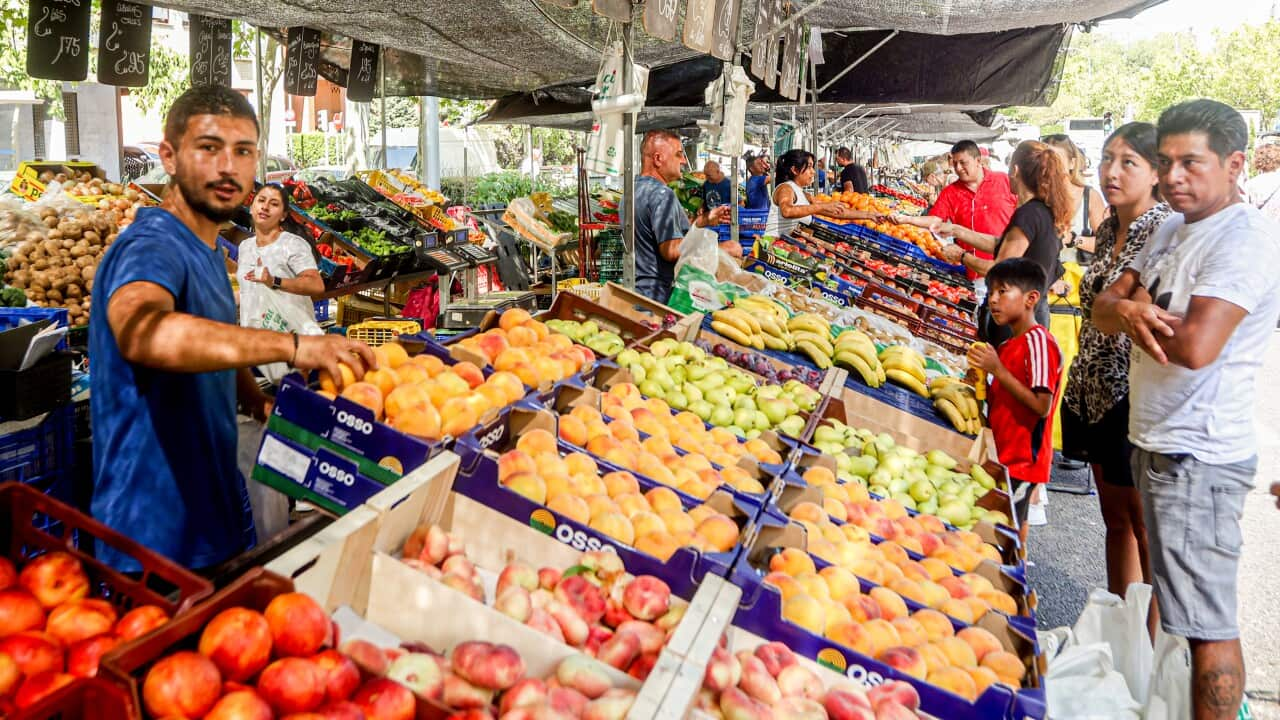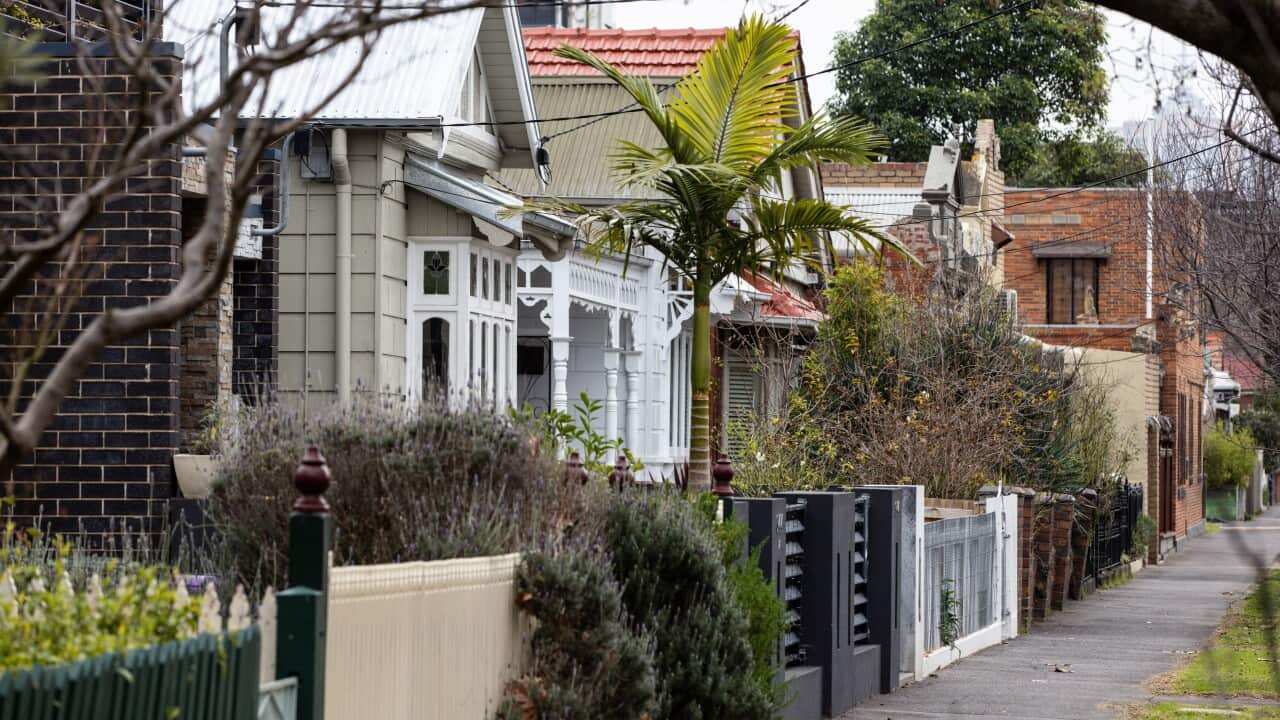Key Points
- Reserve Bank governor Philip Lowe has warned of more rate hikes to come as it fights to curb inflation.
- Advanced economies around the world are being impacted by similar factors, as central banks move in the same direction.
- But some countries are not sticking to mainstream inflation targeting policies.
Mortgage holders in Australia are facing the brunt of rising interest rates and warnings of more to come as the central bank fights to curb inflation.
The Reserve Bank governor this week acknowledged the impacts of increasing interest rates, after .
Appearing , Philip Lowe said he'd heard from people about their distressing circumstances.
"I read those letters and hear those stories with a very heavy heart," he said. "Personally I find it disturbing."

Reserve Bank of Australia Governor Philip Lowe during Senate Estimates at Parliament House in Canberra. Source: AAP / Mick Tsikas
Inflation refers to a continuing increase in prices. As inflation increases, it means people can buy less with their money.
Australia is not the only country facing rate hikes. Economists say the impacts of the COVID-19 pandemic, the war in Ukraine and a spike in commodity prices have been felt across advanced economies.

How interest rates compare across the G20. Source: SBS News
A global 'shock'
Professor Mariano Kulish, from the University of Sydney's School of Economics, said the global economy felt a collective "shock" in the COVID-19 pandemic.
"This shock affected different sectors of the economy very differently. It shifted a lot of demand," he told SBS News. "With these shifts in demand, you have relative price changes. So some prices fell, some went very high."
Professor Kulish said policymakers in Australia, the United States and Europe "threw everything at it" with various economic stimulus measures.
Diana Mousina, a senior economist with AMP, said there has been a strong rebound in economic growth from COVID-19 weakness.
"Australia is not unique in that rebound story. And as a result, we've had high inflation across the advanced world," she told SBS News.
Professor Kulish said rising inflation came down to increased demand for goods and services coupled with contractual supply chain issues in some parts of the world.
"We're still living in the aftermath of that shock, with inflation going very high and then being stimulated further by the Ukraine war and spike in commodity prices," he said.
"At the same time, central banks have an inflation target. So they started increasing interest rates to bring inflation back down to a target."
How has Australia responded?
The Reserve Bank of Australia (RBA) has an official inflation target of 2 to 3 per cent and it's trying to reduce people's spending in order to bring inflation down. Inflation has risen to 7.8 per cent in the year to December, the highest rise since 1990.
The RBA's key inflation-fighting measure is to lift the official cash rate, which influences how banks set their interest rates.
Earlier this month, it raised the cash rate by a quarter of a percentage point to 3.35 per cent. It was the ninth increase since last May and takes the rate to its highest level since September 2012.

RBA governor Philip Lowe said while global factors explain much of this high inflation, strong demand is also adding to inflationary pressures. Source: SBS News
"People really forgot about how corrosive inflation was and how it eroded your savings,” he said.
“How it made income inequality worse. How it really hurt the poor. So I think we have forgotten about that because it’s 30 years since we lived in that world.”
Inflation in Australia began to increase in the early 1970s and remained at over eight per cent in the latter half of the decade. It remained high until the start of the 1990-1992 recession.
What about other countries?
Ms Mousina said economies around the world being impacted by similar factors has led to central banks moving in the same direction - but not necessarily at the same pace.
The US Federal Reserve Bank this month lifted its benchmark rate by 0.25 percentage points to between 4.5 and 4.75 per cent in its eighth hike since March, and warned “ongoing increases” would be needed to curb high inflation. But the Federal Reserve chair also recognised the pace of inflation had cooled.
"If you look at the US, inflation is starting to come down - maybe not as fast as the Federal Reserve would want to - but it looks as if it's turned the corner," Professor Kulish said.
"Here in Australia, it's still not the case. The US has tightened more and faster than Australia has."
LISTEN TO

SBS on The Money: Why US inflation may cause global central banks to reassess interest rates
SBS News
16/01/202306:48
In Europe, Professor Kulish said the situation has been exacerbated by its proximity to the war in Ukraine and dependence of Russian gas and oil into markets.
Also this month, the European Central Bank raised its benchmark rate for lending by half a percentage point to three per cent - the highest level since late 2008 - and pledged to deliver another rate hike next month.
Similarly, the Bank of England raised its official bank rate by 0.5 percentage points to 4 per cent in its tenth straight hike and to a 14-year high. In its updated outlook, the Bank said that inflation “is likely to have peaked” and a recession would be less severe than previously predicted.
Which countries are taking a different approach?
Ms Mousina said China has been less impacted by high inflation because it did not experience a relative rebound in demand due to its strict COVID-zero policy, which kept parts of the country in lockdown. Its inflation rate remains below two per cent on an annual basis.
"The central bank there has been cutting rates - not aggressively - but they've had a few rate cuts to try and stimulate the economy over the past 12 months. And more rate cuts are likely," she said.
But Professor Kulish cautioned against summarising monetary policy in China using a single indicator.
He said countries such as Argentina are not sticking to mainstream inflation-targeting policies, with its inflation rate hitting just shy of 100 per cent. Last month, the Board of the Central Bank of the Argentine Republic kept the monetary policy rate unchanged at 75 per cent.
What's next for Australia?
The RBA governor said the 3.35 per cent cash rate was unlikely at its peak and further increases would be needed to cool inflation.
"I don't think we're at the peak yet but how far they need to go we're still unsure," he said.
"It's going to depend upon the inflation data, the resilience of spending, the strength of the global economy and what's happening with prices and wages."
Ms Mousina said interest rates in Australia could reach global levels.
"But in our view, we won’t get there. We think that the cash rate here will settle at a lower level compared to global interest rates," she said.
In the years ahead, Professor Kulish said he expects to see a return to pre-COVID trends of moderate growth, moderate inflation and modest real wage and productivity growth.
"In the absence of major disruptions or shocks, I think the COVID shock will have worked its way through the system."
With additional reporting by AAP, Reuters












